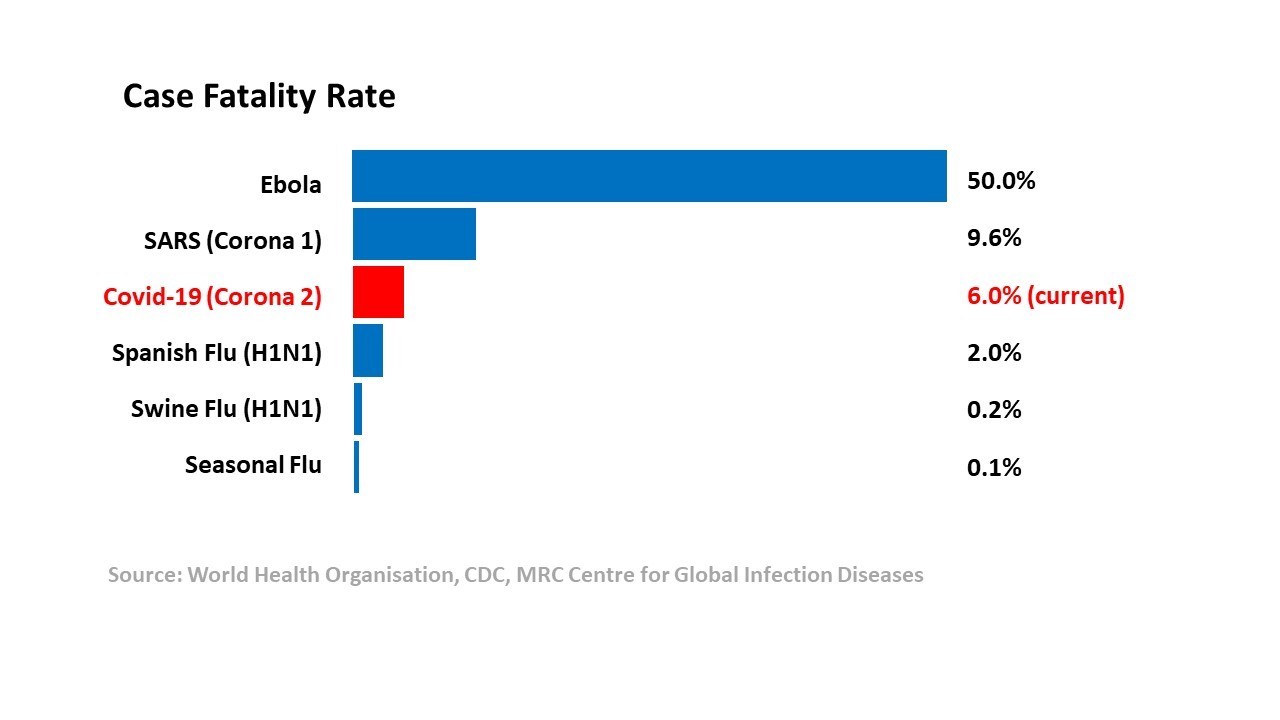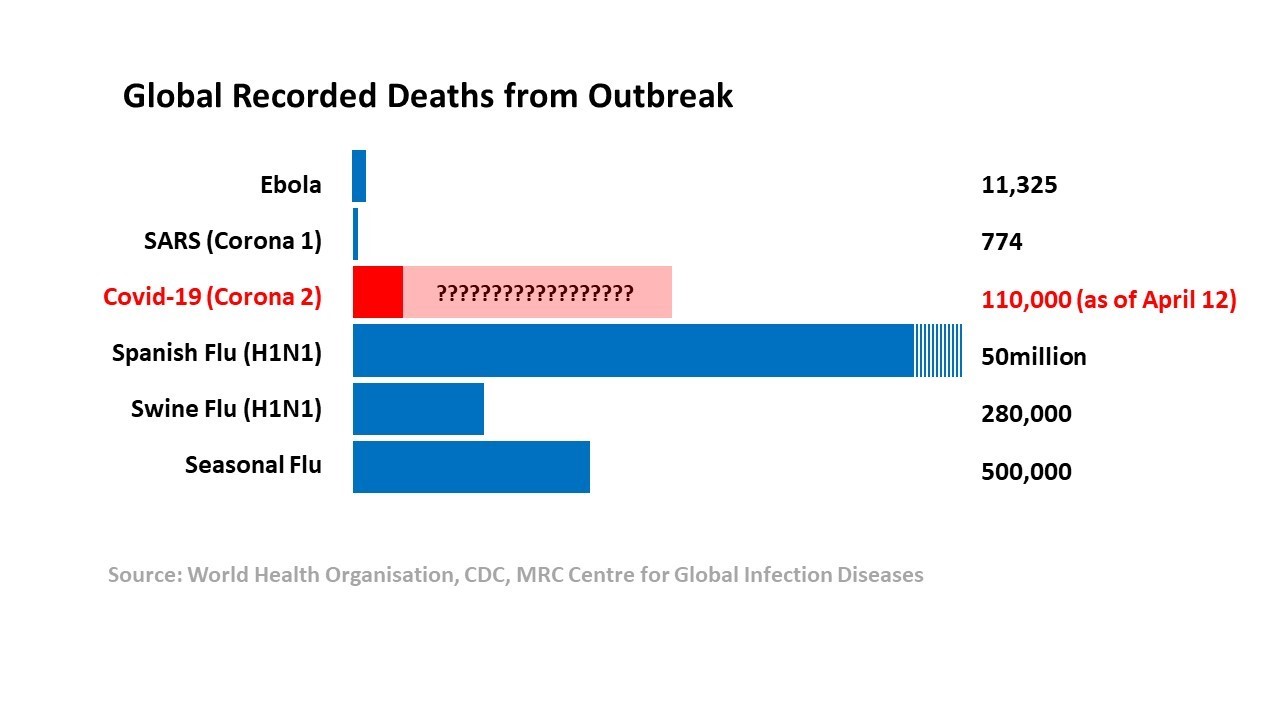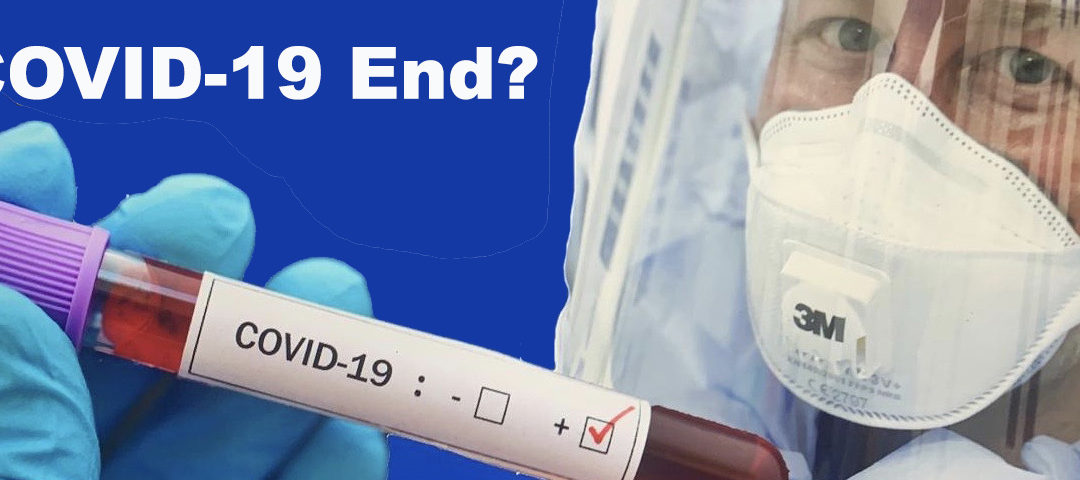Just a few months ago – no one had heard of Covid-19. Fast forward three months and Covid-19 is by far the worlds most searched Internet term; its broken health care systems; crashed economies; millions have been diagnosed; and it has killed hundreds of thousands so far.
It won’t end there of course as this is just the beginning and the question on everyone’s mind is how will this nightmare end?
In an era where science fiction is fast becoming science fact, where fake news is abundant and where the news channels are simply repackaging the same information on a daily basis, I wanted to try and make sense at some of the facts.
So for many of us viruses just weren’t on our radar. This wasn’t the case for others. Bill Gates has been saying this will come for many years, and he was right.
In 2003, the warning signs couldn’t have been any clearer. This was the first time a Coronavirus entered our vocabulary. At the time, cases of infection with a virus causing respiratory distress were reported in China. The disease which was known as Sudden Adult Respiratory Syndrome, or SARS, quickly spread around the world to 26 countries, including the UK which had to close some schools. It created a media storm.
How Will Covid-19 End? (Coronavirus Pandemic)
But in the end the total tally was 8,000 infected and 774 recorded deaths across the world. Some would argue that this was because of impeccable interventions to stop the spread, such as quarantine and isolation.
But then again, in 2003 the world didn’t go into total lockdown. This time the measures seem to be far greater and far more wide reaching than was ever put in place with SARS.
Given that Covid-19 is the sequel to SARS then it begs the question… Why is Covid-19 so much more ferocious?
Is this a Hollywood thing? Like Terminator 2, does the sequel need to be bigger and better? Or is there is something else?

How Deadly is Covid-19?
Death rates are recorded as Case Fatality Rates (CFR). This is the number of people that die over the number of people testing positive. Right now Covid-19 is killing people at a rate of more than 6% (as of today 109,000 deaths with 1.7million people infected). This is not the true CFR of course because we don’t know how many people have the disease without being tested.
On this chart below you can see Covid-19 has a much smaller case fatality than SARs or Ebola Virus (Figure 1).
 Figure 1. Case Fatality Rates associated with various virus’s
Figure 1. Case Fatality Rates associated with various virus’s
Yet when you look at the number of deaths, Ebola killed 11,000 and SARS killed 774 and yet according to the chart they are more deadly than Covid-19 which has killed vastly greater numbers.
So I will now introduce the next important concept in disease transmission and that is contagiousness, measured by the reproduction number or R0 pronounced “are naught”. In the media this is commonly referred to as the R number for simplicity.
If the R0 is less than 1 the disease tends to die out, whereas if its greater than 1 then it tends to spread. Covid-19 currently has an R0 of somewhere between 2 to 2.5, meaning that each person spreads it to about 2-3 people. They then spread it to 2-3 others and so on. After about 10 rounds of spread maybe 2000 or more people are infected. In contrast seasonal flu has an R0 of 1.3 which means after 10 rounds of spread perhaps 60 people will have it and hence Covid-19 is a lot more spreadable than flu. And Ebola has an R0 greater than 10 meaning it spreads a lot more quickly than Covid or Flu.

Figure 2. Recorded deaths from different virus outbreaks (Note Flu deaths are global deaths/year). Covid-19 deaths correct as of 12th April 2020.
But if Covid-19 is more spreadable and much more deadly than seasonal flu, how is it possible that seasonal flu kills half a million people a year?
Even if the case fatality rate for Covid-19 comes down from 6% to say 1% which experts think is more realistic, it would still suggest that hundred of thousands or even millions could die.
The reason the numbers don’t seem to add up, is because there are just too many unknowns.
- We don’t know how many people have got the disease with or without symptoms.This is especially important when it comes to recording cause of death. Only one diagnosis is recorded as the prime cause of death and this is obviously subjective. If someone has a heart attack and is Covid-19 positive then its recorded as a Covid-19 death. If someone has a heart attack and never had a test then its recorded as heart attack.
- We don’t know how long people with Covid-19 are infectious for.
- We don’t know if those that had the virus will be susceptible to reinfection.
- Finally, and most importantly what happens when the current rules and restrictions are lifted and people start congregating and traveling again? In the times of lockdown, people aren’t spreading the virus and hence the replication number (often known as Re) comes down, but as soon as lockdown measures are lifted, the risk is that it starts rising again.
Flattening the curve
It’s also important to remember that the lockdowns don’t and won’t cure the problem of Covid-19. What they do is “flatten the curve”.
The curve that everyone refers to represents the number of people likely to need critical care beds versus the number of beds available.
Heroic efforts are being made to increase critical care capacity with makeshift hospitals being created in a matter of days, and these will save lives, but if healthcare systems overflow, doctors will have no choice but to decide who lives and who dies, the inconceivable rationing of life.
So How will it End?
“..Is it possible that BCG immunization, and that scar you’ve hated on your arm for your entire life, could afford some advantage to infection with Covid-19?”
The end to the pandemic relies on the development of a vaccine or hope that the world develops its own form of immunity, known as herd immunity.
Herd immunity is where enough of the population is resistant to a virus either through vaccination or in this case having been infected and survived. Herd immunity would stop the pandemic in its tracks because there will no longer be enough people available to transmit it.
If we relied on herd immunity alone to control Covid-19 however, it could be a gruesome disaster. True Herd immunity requires a large proportion of the population to become immune, perhaps 70-80% would be a bare minimum, and right now even if 20% of the population had Covid-19 (the truth is without testing we have no idea), we still are a long way off from Herd Immunity alone being a solution.
We only have to look back at history to a time before ventilators and vaccines were available. In 1918 when the H1N1 virus, colloquially known as the “Spanish Flu” killed up to 50 million people worldwide (more than the population of the UK at the time), leaving alive those strong enough to carry the torch of immunity. In fact the H1N1 never went away.
In 2009 it reared its head once more causing Swine Flu, and strangely enough, in contrast to Covid19, it was mainly the younger adults that were affected by Swine Flu, and not the old. Could the old possess some form of immunity?
In fact, such serendipitous inferences may dictate the end to the current pandemic, for example, scientific groups have noted different death rates between communities exposed to BCG vaccination for TB and those that did not. Is it possible that BCG immunization, and that scar you’ve hated on your arm for your entire life, could afford some advantage to infection with Covid-19?
New treatments?
Then what about new treatments to lessen the severity of the disease or even speed up recovery? Rife across the Internet are tales of new miracle viral treatments from stem cells to off the shelf drugs repackaged as Covid-19 killers.
On the 18th March 2020, the anti-malarial, hydroxychorloquine and the anti-viral remdesivir, were announced by Donald Trump to be “game-changer[s]”. In a press conference Trump muted their “tremendous promise” and how they would be made “available almost immediately”. The FDA were quick to re-set expectations that much research was needed before these medications could be proven to be as effective as the promises made. Studies are ongoing.
The NHS in the UK for example funded the RECOVERY trial which has recruited over 1000 patients growing on a daily basis. They are looking into various treatments including hydroxychloroquine and other anti-virals.
A Vaccine
Then of course there is a vaccine. After all Polio was at its peak in the early 1950’s gripping America with thousands dying. In 1955 Jonas Salk developed the polio vaccine and within another 5 or 6 years Polio was next to solved.
It sounds easy, but can the fast paced Internet age put up with the kind of disruption we are seeing now for 5 years? Will stock markets revert to the great depression of the 1930’s?
More than 30 companies and academic institutions are racing to create a vaccine. Some have already identified candidates for a vaccine and some have begun testing in animals, so the race is on.
But the development of any drugs takes time. Experiments to show safety, dosing, and effectiveness of a vaccine are not quick and even in the best case scenario the development of a vaccine could take 18 months especially if you take into account the need to scale up and mass manufacture, even if regulators fast tracked every conceivable hurdle.
The next issue is how long will the immunity last? Will it be a lifetime or a finite period of time? Viruses are prone to mutations where the genetic information stored inside them changes to make it subtly different than it was before. These challenges explain why it is 17 years since the SARS coronavirus pandemic and yet still no vaccine exists, perhaps, a sceptic could argue because the commercial drivers were not in place. This is not the case for Covid-19!.
Despite promises from Politicians that the pandemic will be under control in a matter of weeks, we have to accept that the end is not close and that our lives will be very different for some time to come.
Yet, no matter how uncertain and scary this feels, the fact is that human resilience, throughout the years has never let us down. Providing we remain humane and caring and work cohesively, then our inner strength, innovation and creativity will help find solutions, and as with every pandemic to date we will overcome this and become stronger, and our world a better place as a result.

